180. THE TRAIN, 1964
- Jay Jacobson

- 56 minutes ago
- 18 min read
A mesmerizing masterpiece of courage and cunning

This week brings edge-of-your-seat, full-throttle entertainment in the form of one of my all-time favorite action war films, “The Train”. This cinematic marvel delivers unrelenting suspense, visuals worthy of a gallery, heartfelt performances, rich themes, and twist after unexpected twist. Even if action war films aren’t your cup of tea, it’s impossible not to be swept up by this film’s explosive, exhilarating, and utterly enthralling ride. This is a film you simply shouldn’t miss.

August 1944 — Paris, France. The Germans have occupied the city for 1,511 days, and World War II is nearing its end. “The Train” opens in the stillness of night as a car pulls up to the heavily guarded Musée du Jeu de Paume. A lone man steps out and enters the building, which is silent and deserted inside except for the hundreds of paintings lining its dimly lit walls. Switching on a few lights, he studies several canvases with reverence. We quickly learn that the man is “Colonel Franz von Waldheim”, and these walls contain masterpieces by modern greats like Van Gogh, Picasso, Renoir, Cézanne, Degas, and more.

“Mademoiselle Villard” enters, and “Waldheim” remarks “This is degenerate art, you know. As a loyal officer of the Third Reich, I should despise it”. She thanks him for allowing her to remain in charge of the museum and for safeguarding the paintings, adding, “I knew of books being burned… other things. I was terrified these would be lost”. “Waldheim” retorts, “A book is worth a few francs. We Germans can afford to destroy those. We may not all appreciate artistic merit, but cash value is another matter”. Not fooled by his attempt at indifference, she replies, “I know what these paintings mean to you”.

The door suddenly bursts open and soldiers enter. Much to “Villard’s” shock and horror, “Waldheim” informs her “We’re removing the paintings” and orders his captain to have his men pack them carefully — “I want these on the station platform by tomorrow morning, crated and ready to be loaded aboard the train”. His aim: to get these treasures to Germany before the Allies arrive.

Not wanting the paintings to leave France, “Villard” turns to the underground French Resistance, headed by train inspector “Paul Labiche”. With Paris expected to be liberated by the Allies in three or four days, she urges him to find a way to delay the train until then. But stopping a German train is a death sentence, and only three of “Labiche’s” original team of eighteen remain alive. “Labiche’s” answer is unwavering: “For certain things we take the risk, but I won’t waste lives on paintings”.

“Villard” reminds “Labiche" that the Germans have "taken our land, our food, they live in our houses, and now they’re trying to take our art. This beauty, this vision of the life born out of France, our special vision, our trust. We hold it in trust, don’t you see, for everyone. This is our pride, what we create and hold for the world. There are worse things to risk your life for than that”. She pleads with him to no avail. But as events escalate, “Labiche” has a change of heart, turning “The Train” into a tense, high-stakes battle as he and his team race to stop the train from leaving France while protecting its priceless cargo.

It’s an action-packed adventure chockfull of sabotage, train wrecks, explosions, and more. Yet beneath the thrills lies a tense duel between a man with no regard for life and another with no regard for paintings. Their clash sparks questions about humanity, obsession, the value we assign things, the extremes we’ll go to protect them, and the harsh realities, cost, and foolishness of war and brutality. It’s a rare gem — an action film that makes you think.

“The Train” was inspired by a true event, which I’ll share a bit about in the TO READ AFTER VIEWING section to avoid spoilers. What’s helpful to know beforehand is that the Nazis systematically looted art from private homes, collections, and museums across Europe (much of which was never returned to its rightful owners or heirs). The works plundered in France were gathered at the Musée du Jeu de Paume, which the Nazis controlled from 1940 to 1944 and used as a stolen French art depot. This included a lot of modern art, which the Nazi’s deemed degenerate.

Screenwriters Franklin Coen, Frank Davis, and Walter Bernstein wrote a script very loosely based on Rose Valland’s non-fiction book “Le front de l'art; défense des collections françaises 1939—1945”, inspired by a real WWII event, when the Nazis tried to move a train of stolen art from France into Germany before the Allies arrived. Director Arthur Penn decided to direct it with Burt Lancaster as the star, and did all the casting and preproduction.

There are different accounts as to why, but after the first or third day (depending on the source) of filming, Lancaster fired Penn and brought in John Frankenheimer to direct. The theory I find most plausible is that Lancaster needed a hit and wanted a crowd-pleasing action film, not the intimate movie about art Penn planned. The production shut down while Frankenheimer and Bernstein reworked the script with some help from Lancaster. In the end, Coen and Davis received screen credit and a Best Writing (Story and Screenplay) Academy Award nomination (the film’s only) for the fabulous script.

Frankenheimer’s vision for “The Train” turned out to be a thrilling one. His goal was to make a hyper-realistic, high-octane action film. As such, he shot almost the entire film on location in France with a mostly French cast and crew and authentic trains, stations, planes, tanks, and so on. It feels so real, it's like you're a bystander in 1944, caught in the middle of the action, watching these events unfold.

Frankenheimer’s dynamic visual compositions and masterful use of deep focus allow every detail (from distant background action to intimate closeups) to remain sharp and clear, making this film a visual feast. The brilliant way he stages the movement of actors, cars, trains, and props is captured by fluid camera work and a combination of static shots, pans, and sweeping movements.

One example is the aforementioned scene between “Villard” and “Waldheim”. As they move around inside the museum, Frankenheimer gently glides his camera around them to highlight the overwhelming amount of paintings while keeping the scene an intimate one between two people.

There’s an extraordinary shot in which the German army prepares to leave its Paris headquarters. The camera snakes through crowded rooms — passing overlapping conversations, soldiers pushing carts, gazing out windows, tossing papers into a fireplace, and moving in every direction — before settling on “Waldheim” and following him until he speaks to his superior’s assistant. The shot involved nearly a hundred extras, and between the intricate choreography of the actors and the camera, it took Frankenheimer a day and a half to stage (he filmed it in fifteen minutes). The resulting shot is a gorgeous piece of filmmaking that captures the essence of authentic organized chaos.

That’s far from the only shot bursting with detail. They’re everywhere — soldiers crossing, train smoke billowing, and so on — always in the background, as if the main action was surrounded by life. Frankenheimer also delivers sweeping long shots packed with what look like hundreds of German soldiers, tanks, cars, and trains in constant motion, stretching to the horizon. The effect makes the German army seem omnipresent, inescapable, and all-powerful. Frankenheimer's choreographed movements and use of detail are brilliant.

As for the action, it’s pretty mind-blowing to realize that this film was made before digital effects, remote cameras, or steady cams. So all the train wrecks are real, as were the airplanes, and even some of the explosions. At least nine cameras were crushed by trains during production. To do a second take of a shot with a moving train in it would take at least an hour or two just to get the train back to position and up to speed. Often, they would only get one chance to capture the action.

One of the film’s most famous sequences involves British planes bombing a train station. Frankenheimer discovered a French railway station that planned to change the gauge of its tracks but lacked the funds to do so. So he offered to demolish it for free and film the destruction for the movie. Actual dynamite was used to blow up the tracks, train cars, lookout tower, and more, with the action captured by twenty-two cameras, many concealed in underground bunkers. Frankenheimer went all out in creating one heck of an exciting film.


New York City-born John Frankenheimer fell in love with movies early on and began acting in college before discovering directing while serving in the Air Force film squadron. Breaking into television in 1953, he rose quickly from cinematographer and Sidney Lumet’s assistant to one of TV’s top directors, directing over 120 TV episodes, earning five Emmy nominations. After an unsuccessful feature film debut (1957’s “The Young Stranger”), he went back to TV, returning to movies a few years later to direct Burt Lancaster in 1961’s “The Young Savages”. A string of film classics followed, praised for their social bite and visual boldness (“Birdman of Alcatraz”, "The Manchurian Candidate”, “Seven Days in May”, “The Train”, “Seconds”, and "Grand Prix"). He was now one of the preeminent directors of the 1960s. After some missteps, he found a niche directing thrillers during the 1970s and beyond. His other films include “French Connection II”, “Black Sunday”, “The Iceman Cometh”, “Ronin”, and his final, “Reindeer Games”. Returning to TV in the 1990s, he added four Emmy wins to his shelf (with nine additional nominations). He was married twice. John Frankenheimer died in 2002 at the age of 72.
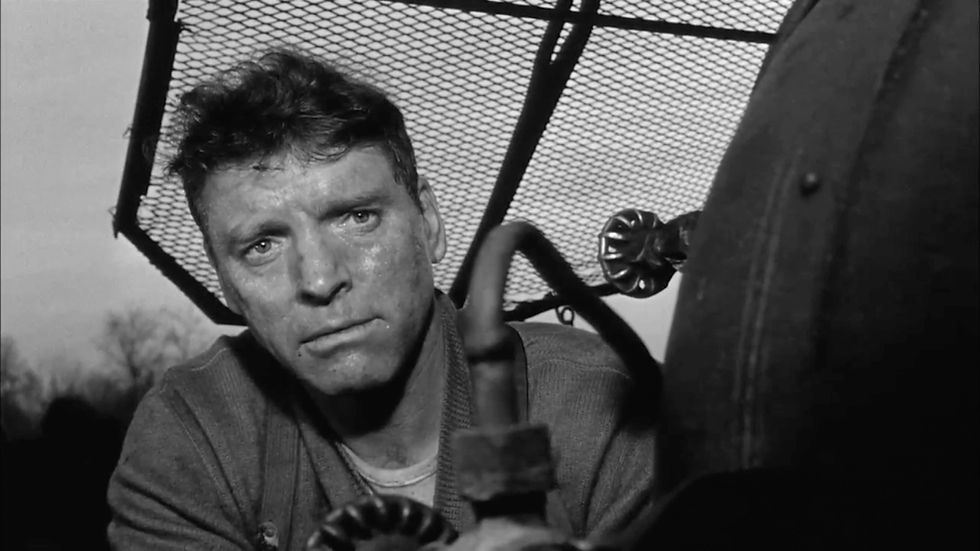

Burt Lancaster stars in “The Train” as tough, no-nonsense train inspector “Paul Labiche” who also heads a small French Resistance group. Though the film’s characters are supposedly speaking French or German, the original version has everyone speaking English, most with authentic accents. Lancaster, the sole American in the cast, doesn’t even attempt a French accent, yet his commanding presence is so convincing that within moments we completely buy him as a Frenchman. While being both understated and intense, Lancaster embodies “Labiche’s” determination, strength, working-class pragmatism, and compassion. Through his eyes we glimpse “Labiche’s” inner turmoil. Watch them during the “train oil” scene — they reveal a man who deeply cares, even if he can’t show it outwardly. Lancaster brings this same layered emotion to every interaction, whether with his comrade “Didont” or with “Christine”, allowing us to see and feel “Labiche’s” shifting thoughts and feelings. It’s a delicately nuanced performance, particularly for such a larger than life movie star as Lancaster.

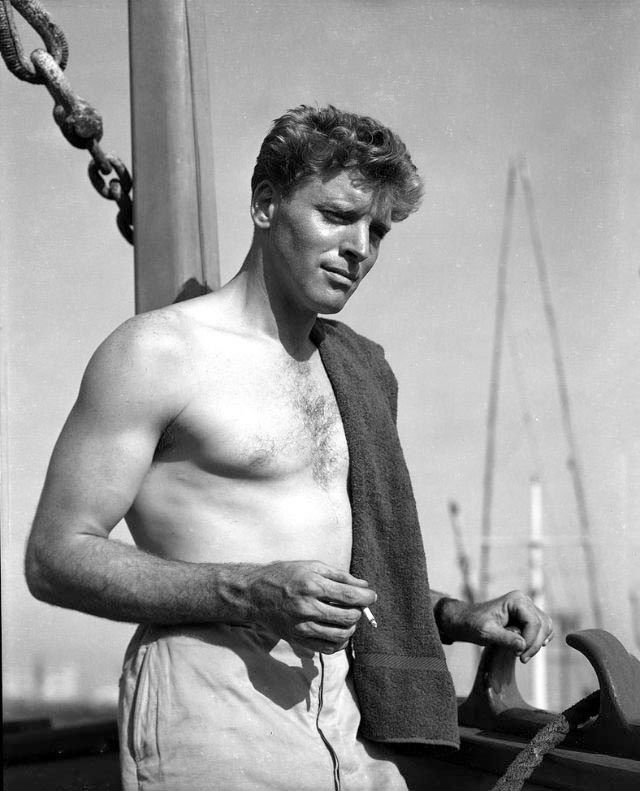
Lancaster’s magnetism and talent aren’t limited to his acting. Trained as an acrobat before his film career, his physicality is peerless among movie stars. An actor who took his craft quite seriously, for this film he learned to drive a train, rig a bomb, weld a bearing, and more, making “Labiche” appear as a tried and true expert at it all. Lancaster did all his own stunts in the film — falling out of a moving train, running on roofs, climbing out windows, up walls, down buildings, rolling down a mountainside, and even acted as stunt double for another actor who falls off a roof — all with the inherent power, grace, and flexibility of a panther. On one of his days off, Lancaster hurt his knee golfing, so to incorporate his injury, Frankenheimer wrote into the script that “Labiche” gets shot in the knee. That means Lancaster did some of these stunts with a bad knee while in pain. And by the way, Lancaster turned 50 years old during the production.


One of the biggest stars of the 1950s, Burt Lancaster used his clout so he could make personal passion project as well as crowd-pleasing box-office hits. After two back-to-back 1963 box-office disappointments — “A Child is Waiting” opposite Judy Garland, and Luchino Visconti’s “The Leopard” (a triumph in Europe, but after severe studio re-editing, a U.S. flop) — he needed a hit and saw “The Train” as that opportunity. It was also a film that could have a strong social conscience, perfectly suited to Frankenheimer. This was Lancaster and Frankenheimer’s fourth collaboration, after “The Young Savages”, “Birdman of Alcatraz” (which earned Lancaster an Oscar nomination), and “Seven Days in May”. They made one more film together, 1969’s “The Gypsy Moths”. Despite “The Train" going over schedule and budget, it was a critical and financial success in both Europe and the US, and the National Board of Review named it one of the year’s Top Ten Films. The 1960s proved a strong decade for Lancaster, in large part due to his work with Frankenheimer.

Lancaster’s rugged charm, sexy masculinity, distinct clipped speech, trademark smile, and ability to blend toughness with vulnerability kept him a major star, and the American Film Institute ranked him the 19th Greatest Male American Screen Legend of All Time. You can read more about Burt Lancaster in my previous posts on ”From Here to Eternity” and “Brute Force”, and a bit in “Marty”. Click the film titles to open them.


Co-starring in “The Train” is Paul Scofield as “Colonel Franz von Waldheim”, the German officer who secretly loves art. “Waldheim” is no typical movie Nazi because along with his obsession for beautiful paintings, Scofield keeps him ruthless but also aristocratic and cultured. With a threatening stillness, he becomes the embodiment of a chilling quiet calculation. Notice how cooly he lies over the phone to his superior about the train’s departure, or the calm mercilessness with which he tells “Major Herren”: “All ‘von Rundstadt’ can lose is men. This train is more valuable”. Scofield imbues an inner ferociousness under an intensely controlled exterior, and when he finally loses it after one train wreck too many, yelling “Get Labiche… get him! Kill him! Kill him”, it's enough to make anyone quake in their boots. Scofield is sensational, and his truthfulness is another reason “The Train” feels real. An English actor, he played the role with a German accent.


Born in the Sussex village of Hurstpierpoint, England, Paul Scofield discovered Shakespeare at twelve years old, and after playing “Juliet” in a school production the following year, decided to become an actor. At eighteen, he began his professional stage career, and by twenty-two, joined the prestigious Birmingham Repertory Theater. In 1946, he arrived at Stratford-upon-Avon, where he found great success in Shakespearean roles such as “Henry V”, “Hamlet”, and was soon lauded as one of Britain finest Shakespearean actors (it’s said his “King Lear” was unmatched). Scofield also excelled in modern plays, most notably originating the role of “Antonio Salieri” in “Amadeus”, and starring as “Sir Thomas More” in 1960’s “A Man for All Seasons” (winning a Tony Award when he brought it to Broadway). While building his legendary stage career, Scofield made his film debut as “King Philip II of Spain” in 1955’s “That Lady”, winning a Most Promising Newcomer BAFTA. After 1958’s “Carve Her Name with Pride” and a few TV appearances, came his third film, “The Train”.

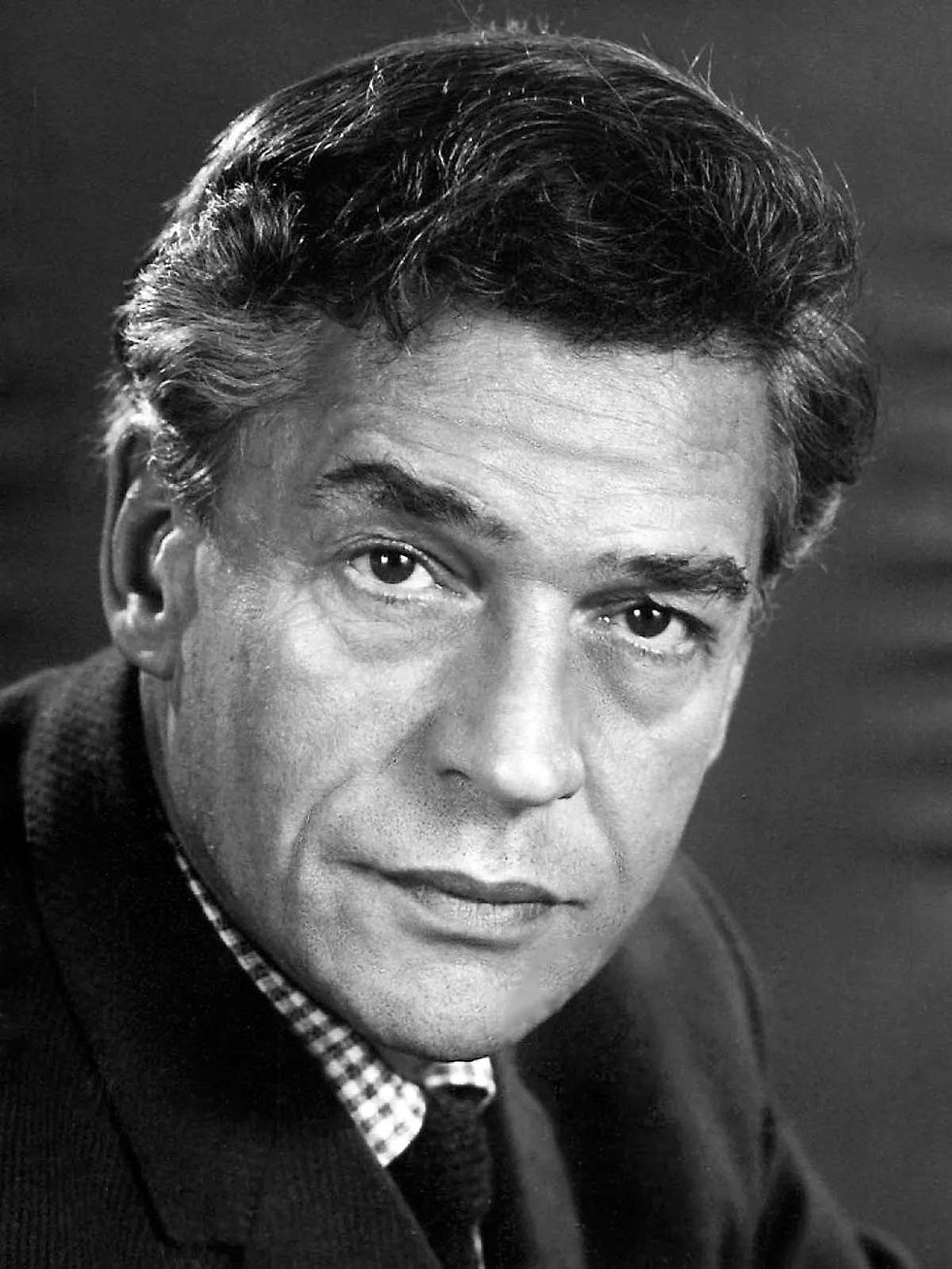
Still largely unknown to film audiences, Scofield became internationally famous two years later reprising “A Man for All Seasons” onscreen in the 1966 Best Picture Oscar winner with the same name, snapping up Best Actor Oscar, BAFTA, Golden Globe, and other awards for himself. Though he appeared in just over twenty films through the 1990s — including “Bartleby”, “A Delicate Balance”, “Hamlet”, “The Crucible” (Best Actor BAFTA), and “Quiz Show” (Best Supporting Oscar and BAFTA nominations) — he remained devoted to the theater. Scofield also won an Emmy for 1968’s “Male of the Species”. Widely regarded as one of Britain’s greatest stage actors, Scofield declined knighthood three times. He was appointed Commander of the Order of the British Empire in 1956 and made a Member of the Order of the Companions of Honour in 2001. Married once, for over sixty years until his death. Paul Scofield died in 2008 at the age of 86.


Jeanne Moreau plays “Christine”, the owner of a small hotel. Without a huge amount of screen time, Moreau conveys a multitude of feelings through guarded glances, telling gestures, and curt replies. “Christine's” a hard, cautious business woman trying to make money and get by during the war, yet in moments such as when “Labiche” gives her money for the room and damage, we silently see this woman become soft and vulnerable. And when “Labiche” checks out and “Christine” offers him coffee and tells him her name, Moreau's expressions let us know this woman is longing and suffering. Her striking talent makes a simple scene a powerhouse of emotion, and her portrayal in this film clearly illustrates why she was an acclaimed actress and top international star.


Born in Paris to a French father and English mother, Jeanne Moreau was forbidden as a child to watch movies or read newspapers because her father deemed them tawdry. At 15, she snuck out with friends to see a play and instantly knew she wanted to be a stage actress. She pursued acting without her father’s knowledge (her mother covered for her lies), until her picture appeared on the front page of a newspaper due to the success of a play. Her father saw it, hit her, and threw her out of the house. Moreau studied at the Conservatoire de Paris, acted in plays, and became a leading actress with the Comédie-Française. While continuing her stage work, she began appearing in films, debuting in 1949’s “Dernier Amour”. About twenty films later came her breakthrough in Louis Malle’s debut feature “Elevator to the Gallows” — a low-budget, cutting-edge film shot largely on Paris streets with handheld cameras and no makeup. It was a raw, modern style of filmmaking that became known as the French New Wave (see my “The 400 Blows” post for more on that).


That same year, Moreau starred in another Malle film, the controversial “The Lovers”, which made her a star, Her international fame skyrocketed even higher with François Truffaut’s 1962 New Wave classic “Jules et Jim” (earning her a BAFTA nomination), helping make her a female icon of the French New Wave known for her sensual, weary, passionate, and earthy presence. Moreau worked with world-class directors around the globe including Orson Welles, Michelangelo Antonioni, Luis Buñuel, Rainer Werner Fassbinder, Elia Kazan, Jacques Demy, and Wim Wenders. Her roughly 120 films include “La Notte”, “La Baie des Anges”, “Diary of a Chambermaid”, “Viva Maria!”, “The Bride Wore Black”, “Going Places”, “Chimes at Midnight”, “La Femme Nikita”, and 1991's "La Vieille Qui Marchait dans la Mer”, which won her a Best Actress Cesar Award. She also appeared in about two dozen television shows and directed three films.

Moreau received multiple lifetime achievement awards, from BAFTA, Cannes and others, and I was lucky enough to attend a tribute to her at the Academy of Motion Pictures in 1998, with Moreau in attendance — a real thrill. She was married twice, to French actor Jean-Louis Richard and American director William Friedkin, and had high-profile relationships with Louis Malle, François Truffaut, Pierre Cardin, and Tony Richardson. Jeanne Moreau died in 2017 at the age of 89. Moreau is also briefly mentioned in my “The 400 Blows” post, in which she makes a brief cameo.


The supporting cast is made up of superb character actors, which certainly includes Michel Simon as train engineer “Papa Boule”. Simon’s extraordinary talent lets us witness this simple man’s heart and soul, whether it’s his tired disgust with the Germans, his forceful confidence driving a train, or how his face lights up remembering a girl he knew who modeled for Renoir. When someone explains to him the importance of the paintings, that they represent "the glory of France", we can see “Boule” internally ponder it. And Simon is incredibly moving in the “train oil” scene. Michel Simon was one of France's major character actors, so beloved, that upon his passing the President of France, Valery Giscard d'Estaing, publicly called his death “a great loss to French cinematography”.
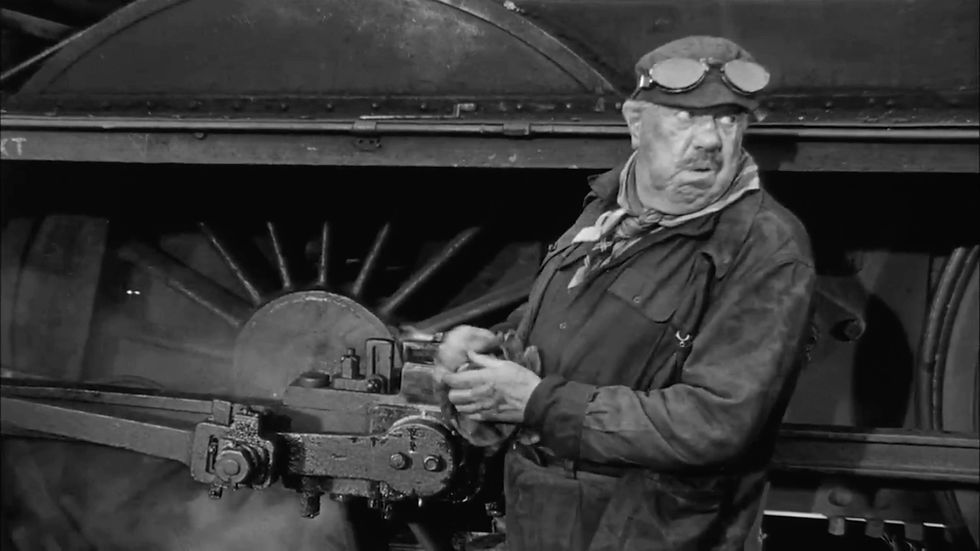

Swiss-born Michel Simon moved to Paris where he worked as an acrobat, magician, clown, and the like. After seeing a 1915 production of “Hedda Gabler”, he decided to become an actor, and began appearing on stage in 1920. After continual stage work, his break came in a supporting role in the 1929 play "Jean de la Lune”, which showed audiences his enormous talent, leading him to acclaim and better roles. Simon appeared in about a half dozen silent films starting with 1924's "La Galerie des Monstres", and including playing "Jean Lemaître” in the iconic, "The Passion of Joan of Arc”. His film career took off in the sound era, and in more than six decades, he appeared in over 100 films, several TV shows, and anywhere between 40 and 150 plays (depending on the source). His other films include "The Two of Us", "Port of Shadows", "Panic", "Beauties of the Night", "La Chienne”, "Poison", "La Beaute du Diable", “Boudu Saved From Drowning”, and “L'Atalante”. Simon was celebrated for his distinctive appearance, gravelly voice, and remarkable ability to bring both comedy and drama vividly to life. Known to prefer the company of animals to people, he briefly married once and had one son, actor François Simon. Michel Simon died in 1975 at the age of 80.


Also impressive in “The Train” is Wolfgang Preiss as “Major Herren”, a Nazi officer who dutifully follows orders, even when they mean sending someone to their death. With the art train taking top priority, "Herren" becomes entangled in the high-stakes drama surrounding it. Preiss plays "Herren” as less rigid than “Waldheim”, yet equally ruthless, as seen in the “train oil” scene, and he’s one of the few men unafraid to stand up to “Waldheim”. Preiss renders “Herren" as a fully realized human being (even if he's doing the wrong thing), revealing an almost sensitive side in the scene when the trucks arrive — a moment that unexpectedly adds depth to both his character and the film. Preiss excelled at portraying this brand of thoughtful, semi-sympathetic villainous men, variations of which he was frequently typecast playing in German and international productions, including Hollywood films.


Nuremberg-born Wolfgang Preiss began on German stages in 1932. His film debut was in the 1942 UFA production “Die Große Liebe” , followed by “Besatzung Dora”. He then returned to theater while dubbing films, lending his voice to actors such as Christopher Lee, Lex Barker, Anthony Quinn, and Claude Rains. Preiss returned to film acting in 1951 with “Falschmünzer am Werk”, and “Canaris" in 1954. In 1955, he earned critical acclaim and a Best Actor German Film Award starring in “The Plot to Assassinate Hitler”, which set his career in motion in Germany and internationally. In Germany, he became well-known playing the villainous “Dr. Mabuse” in five films in the 1960s — a role still closely associated with him. Over the course of his career, which lasted through the 1990s, Preiss appeared in more than 160 films and television productions. His filmography includes “The Longest Day”, “A Bridge Too Far”, “The Counterfeit Traitor”, “Von Ryan's Express”, “The Boys from Brazil”, “Il Mulino Delle Donne di Pietra”, and “Hunde, Wollt Ihr Ewig Leben” (which earned him a Best Supporting Actor German Film Award nomination). His TV appearances include “The Winds of War”, “War and Remembrance”, and “SOKO München”. Married three times, he’s the grandfather of actress Laura Preiss. Wolfgang Preiss died in 2002 at the age of 92.

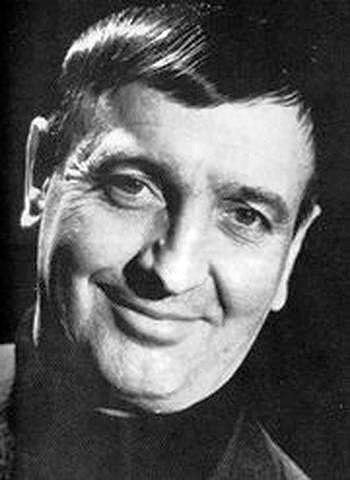
The last actor I’ll spotlight of the many familiar talents in “The Train’s” supporting cast is Albert Rémy who plays “Didont”, one of Labiche’s fellow French Resistance fighters. The most sensitive of the group, “Didont” is also the one who most wants to help “Villard” protect the paintings. As he reasons, “If the Germans want [the art] so much, maybe we should do something”. Rémy gives “Didont” a fearlessness and quiet courage, underscored by an ever-present gentle kindness that makes us care deeply for him. He’s wonderful in every scene, maintaining a calm yet resolute demeanor, and he shines in powerful moments — whether losing control on the train while a Spitfire fighter plane shoots at them from above and using the whistle as a surrogate scream of frustration, or sharing a tender conversation in the farmhouse with “Labiche” about the paintings. Rémy plays these moments with such sincerity that they become some of the film’s most affecting scenes. Like Lancaster, he learned to drive a train for the role and even performed his own stunt of disconnecting a moving train car. In every sense, Rémy brings the film its heart.


There's not a lot of biographical information to be found about French-born Albert Rémy, which is odd considering how many roles he had in classic films (albeit, mostly in smaller parts). It seems his beginnings were in the circus and then the theater as a designer and director before dedicating himself to acting. Rémy debuted in movies in 1943, worked steadily immediately, and accrued over 100 film and TV credits over the next twenty odd years until his untimely death. His roster of films also includes "Children of Paradise", "French Cancan", "Crime and Punishment", "The Hunchback of Notre Dame", "Grand Prix", "Pantalaskas", "Shoot the Piano Player", "Gigot", "Is Paris Burning?", "The 25th Hour", "1 Homme de Trop", and his final, 1967's "The Oldest Profession". His most famous role was costarring as “Julien Doinel”, the father in 1959’s "The 400 Blows”. Not sure if he was ever married. Albert Rémy died of a heart attack in 1967 at the age of 51.

Maurice Jarre, one of cinema’s top composers, delivers a highly effective score for “The Train”. Bold when needed, quiet when not, his music underscores and shapes the film’s mood. He also leaves a lot of silence throughout, rendering the music (and the silence) that much more effective. You can read more about Maurice Jarre is my post on “Lawrence of Arabia”.

This week’s film is a glorious mix of precision and power, resulting in an extraordinarily entertaining flick. Sit back and get ready for one heck of an intensely fun ride. Enjoy “The Train!”!
This blog is a (currently triweekly) series exploring classic films from the silent era through the 1970s. Each post recommends a film to watch, aiming to entertain, inform, and deepen your appreciation of cinema — its stars, directors, writers, the studio system, and more. Be sure to visit the HOME page to learn more, subscribe for email updates, and check out THE MOVIES page for a full list of films. Please comment, share with others, and subscribe so you never miss a post. Thanks for reading!
YOU CAN STREAM OR BUY THE FILM ON AMAZON
OTHER PLACES YOU CAN BUY THE FILM:
As an Amazon Associate I earn from qualifying purchases, and any and all money will go towards the fees for this blog. Thanks!!
TO READ AFTER VIEWING (contains spoilers):

In reality, the French Resistance did prevent the Nazis from sending a train of stolen art from France to Germany, though it was done a lot less elaborately than in this film. Instead of train wrecks and explosions, the French Resistance used the bureaucracy of red tape to stall for time and a few train derailments to block tracks. The actual train was carrying 148 crates filled with a total of 967 paintings.








Hi Jay, Great movie and great write-up about it. Watched the movie about a year ago based on it being one of Lancaster's best movies. Was not disappointed and never have been by any of Lancaster's movies I have seen. The movie was so well done and great acting by all. A piece of history I was not familiar with.
Best Regards,
Stuart
I love this blog, seems like you always pick my favorite films to discuss and reveal tasty details about the film, the actors, the score; i don't think I could survive at a cocktail party or a bar without reading your posts.
"from here to eternity" sure but how 'bout some "elmer gantry".
"As long as I got a foot, I'll kick booze. And, as long as I got a fist, I'll punch it. And, as long as I got a tooth, I'll bite it."